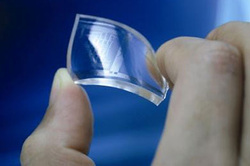
Perhaps the one thing that is considered the major drawback of mobile technologies is their battery life. You can have the most powerful device with sky-rocketing specs, but it won’t be any rewarding if you can only use it for only a few hours; then, you’re left staring at a useless blank screen at the end of the day. Although portable chargers serve as a temporary fix, still, the dream of having a long-lasting energy source is what consumers are clamouring to have in their handheld devices.
The current technology of lithium-ion batteries can’t seem to keep up with the demands of more powerful and faster computers. You can see a lot of battery-saving tips online that can prolong the time your smartphone is kept on; however, that is just tantamount to limiting yourself to some of its great features and stripping yourself of the opportunity to utilize the full potential of your device. Though those tips can bring about minor improvements, they still can’t spell the fundamental difference that tech consumers really yearn for.
Some experts are foreseeing the end of the lithium-ion technology. No matter how manufacturers have gone far in tweaking the said technology, improvements are still not enough to be able to match the innovations of handheld devices in general. So, some, who prefer taking the road less travelled, are working on a rather more revolutionary concept. And, one of the most promising areas in terms of battery research is based on the graphene technology. “It’s a new enabling technology. It’s not a progressive improvement over previous technologies; it breaks the normal paradigms of energy sources. It’s allowing us to do different, new things,” said James Pikul, first author of the concept.
Graphene is a single layer of carbon, explains Dr. Richard Kaner, Professor of Chemistry and Biochemistry at UCLA. According to him, “It’s one of the strongest materials ever known, and it’s completely flexible.” It is found out that graphene has the ability to be a supercapacitior, enabling it to hold large amounts of charge that expends slowly. Furthermore, the potential of this variant was seen in charging it to its full capacity, which could only take less than a minute.
Mind you, this is no science fiction at all. Because of the fact that graphene is a relatively thin material, it is the best energy source to be used on wearable gadgets, even so a gateway to paper-thin device prototypes. Another issue that graphene can address is the wear-and-tear phenomenon subjected to traditional rechargeable batteries. In the long run, batteries of today degrade and lose their ability to retain a charge.
As of now, the British government has allocated £21.5 million to various UK universities involved in the research of graphene as a source of energy. It aims to develop the application for the material to be used for commercial purposes. It will just be a matter of time until smartphone manufacturers make the dream of an almost perpetual energy source that can be rapidly replenished come into fruition in every handheld device.
The current technology of lithium-ion batteries can’t seem to keep up with the demands of more powerful and faster computers. You can see a lot of battery-saving tips online that can prolong the time your smartphone is kept on; however, that is just tantamount to limiting yourself to some of its great features and stripping yourself of the opportunity to utilize the full potential of your device. Though those tips can bring about minor improvements, they still can’t spell the fundamental difference that tech consumers really yearn for.
Some experts are foreseeing the end of the lithium-ion technology. No matter how manufacturers have gone far in tweaking the said technology, improvements are still not enough to be able to match the innovations of handheld devices in general. So, some, who prefer taking the road less travelled, are working on a rather more revolutionary concept. And, one of the most promising areas in terms of battery research is based on the graphene technology. “It’s a new enabling technology. It’s not a progressive improvement over previous technologies; it breaks the normal paradigms of energy sources. It’s allowing us to do different, new things,” said James Pikul, first author of the concept.
Graphene is a single layer of carbon, explains Dr. Richard Kaner, Professor of Chemistry and Biochemistry at UCLA. According to him, “It’s one of the strongest materials ever known, and it’s completely flexible.” It is found out that graphene has the ability to be a supercapacitior, enabling it to hold large amounts of charge that expends slowly. Furthermore, the potential of this variant was seen in charging it to its full capacity, which could only take less than a minute.
Mind you, this is no science fiction at all. Because of the fact that graphene is a relatively thin material, it is the best energy source to be used on wearable gadgets, even so a gateway to paper-thin device prototypes. Another issue that graphene can address is the wear-and-tear phenomenon subjected to traditional rechargeable batteries. In the long run, batteries of today degrade and lose their ability to retain a charge.
As of now, the British government has allocated £21.5 million to various UK universities involved in the research of graphene as a source of energy. It aims to develop the application for the material to be used for commercial purposes. It will just be a matter of time until smartphone manufacturers make the dream of an almost perpetual energy source that can be rapidly replenished come into fruition in every handheld device.
 RSS Feed
RSS Feed